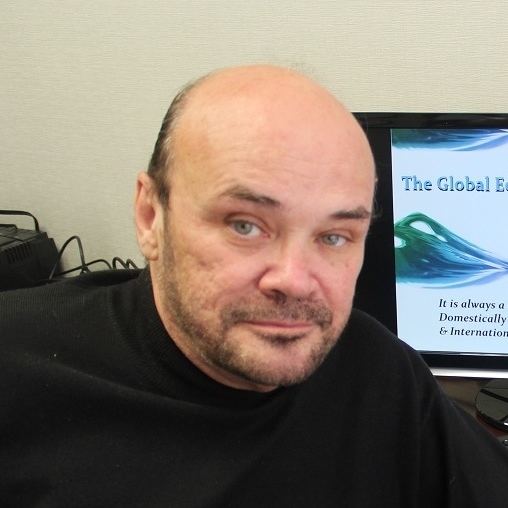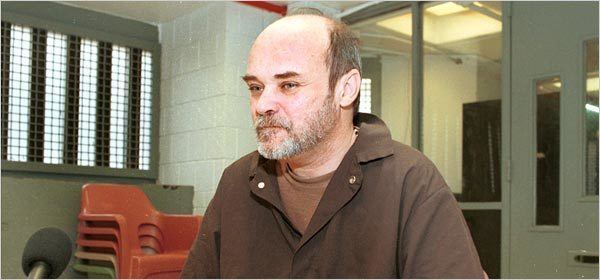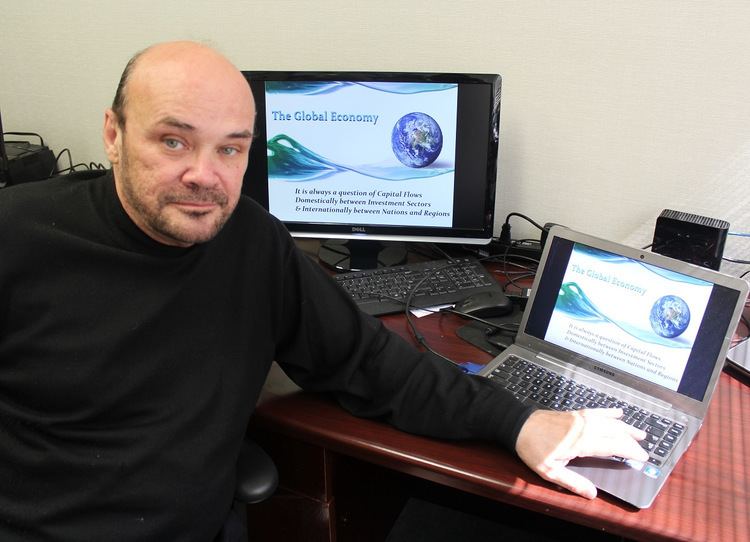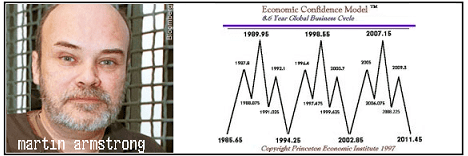Occupation Chairman | Name Martin Armstrong | |
 | ||
Full Name Martin Arthur Armstrong Employer Princeton Economics International Ltd Known for Creator of the Economic Confidence Model Similar People Marcus Vetter, Gerald Celente, Peter Schiff, Paul Craig Roberts, Alex Jones | ||
Martin Arthur Armstrong (born November 1, 1949) is an economic forecaster who uses his own computer model based on pi. In 1999 Armstrong was charged with fraud by the SEC and the CFTC. Armstrong was imprisoned for eleven years on contempt of court and fraud charges.
Contents
- Career
- Personal life
- Economic Confidence Model
- Predictions
- CFTC violations
- Criminal conviction
- Documentary film
- Climate change
- References

Career

At age 13, Armstrong began working at a coin and stamp dealership in Pennsauken, New Jersey. In 1965 at age fifteen he bought a bag of rare Canadian pennies that for a brief period would have made him a millionaire, had he sold them before they crashed in value. After becoming the manager of his employer's store, he and a partner opened a collectors' store when he was twenty-one. Armstrong progressed from gold coin investments to following commodity prices for precious metals. In 1973, he began publishing commodity market predictions as a hobby. As his coin and stamp business declined ten years later, Armstrong spent more of his time on his commodity business. In 1983, Armstrong began accepting and fulfilling paid subscriptions for a commodity market forecast newsletter.

After finishing high school, Armstrong briefly attended RCA Institutes (now TCI College of Technology) in New York City and audited courses at Princeton University but did not obtain a college degree.

His economic philosophy was influenced by his father, a lawyer whose grandfather had lost a fortune in the 1929 stock market crash. As a high school student, after being shown The Toast of New York, a 1937 film about Jim Fisk and the Black Friday panic of 1869, Armstrong came to believe that assets do not linearly appreciate over time and that, historically, some manner of economic panic occurred every 8.6 years.
Armstrong has traded as a forecaster under various business names, including Princeton Economics International, Princeton Economic Consultants, Inc., Economic Consultants of Princeton, Inc., and Armstrong Report, Inc.
Personal life
Armstrong is divorced. He has two children, a daughter Victoria "Vicky" Armstrong (born 1977) and a son Martin Armstrong Jr. (born 1976), and an elderly mother.
Economic Confidence Model
Armstrong's Economic Confidence Model is an economic cycle theory that proposes that economic waves occur every 8.6 years, or 3141 days, which is approximately
Predictions
Armstrong's theory was first applied in 1977, when he used it to successfully predict an upturn in the price of commodities, according to The New Yorker magazine.
In Time magazine, Justin Fox wrote that Armstrong's model "made several eerily on-the-mark calls using a formula based on the mathematical constant pi."
Barron's noted the model called for a change in sentiment in June 2011.
Armstrong's forecast of an imminent Russian economic collapse was mentioned in the Financial Times on June 27, 1998. In August 1998 the currency market saw the 1998 Russian financial crisis.
According to an OpEd in The Guardian, Armstrong incorrectly predicted that a sovereign debt crisis, or "Big Bang" as he called it, would begin on 1 October 2015.
CFTC violations
In 1985 Armstrong was found to have violated Commodity Futures Trading Commission regulations by failing to register as a commodity trading advisor, failing to deliver required disclosure documents to clients, and failing to maintain proper records. In 1987 one of Armstrong's trading entities, Economic Consultants of Princeton Inc., was charged with failing to disclose a commission-sharing agreement, and another of his entities, Princeton Economic Consultants Inc, was charged with misrepresenting hypothetical performance results and omitting a required disclaimer in advertisements. The penalties levied banned Armstrong and his companies from trading for 12 months, revoked their registrations, imposed cease and desist orders, and levied civil penalties totalling $50,000.
Criminal conviction
In 1999, Japanese fraud investigators accused Armstrong of collecting money from Japanese investors, improperly commingling these funds with funds from other investors, and using the fresh money to cover losses he had incurred while trading. US prosecutors called it a $3 billion Ponzi scheme. Allegedly assisting Armstrong in his scheme was the Republic New York Corporation, which produced false account statements to reassure Armstrong's investors. In 2001, the bank agreed to pay US$606 million as restitution for its part in the scandal.
Armstrong was indicted in 1999, and was ordered by Judge Richard Owen to turn over $15 million in gold bars and antiquities bought with the fund's money; the list included bronze helmets and a bust of Julius Caesar. Armstrong produced some of the items, but claimed the others were not in his possession; this led to several contempt of court charges. Armstrong was jailed for seven years under contempt of court, until Armstrong reached a plea agreement with federal prosecutors. Armstrong admitted to deceiving corporate investors and improperly commingling client funds in a case that prosecutors said resulted in commodities losses of more than $700 million. Armstrong was then sentenced to five years in prison. He was released from Federal custody on September 2, 2011, after serving a total of 11 years in jail.
Documentary film
The 2014 documentary film The Forecaster tells the story of Armstrong's financial model, his imprisonment and release. It was directed by Marcus Vetter and Karin Steinberger and co-produced by Arte. The Los Angeles Times film critic described the film as "intended primarily as a name-clearing platform for Armstrong to relate his version of the events" and that it was robbed of perspective by lacking commentary from authorities. The New York Times film critic bemoans the film's "one-sided assertions and insinuations" and "less than skeptical" tone. The Washington Post critic observes that "though the Armstrong partisans in the film strongly suggest that [his models work], director Marcus Vetter struggles to convince the lay viewer."
Climate change
According to DeSmogBlog, Armstrong has frequently posted on his website articles that deny the existence or importance of man-made climate change. Armstrong further stated in June 2016 that "Britain is moving into an Ice Age".
